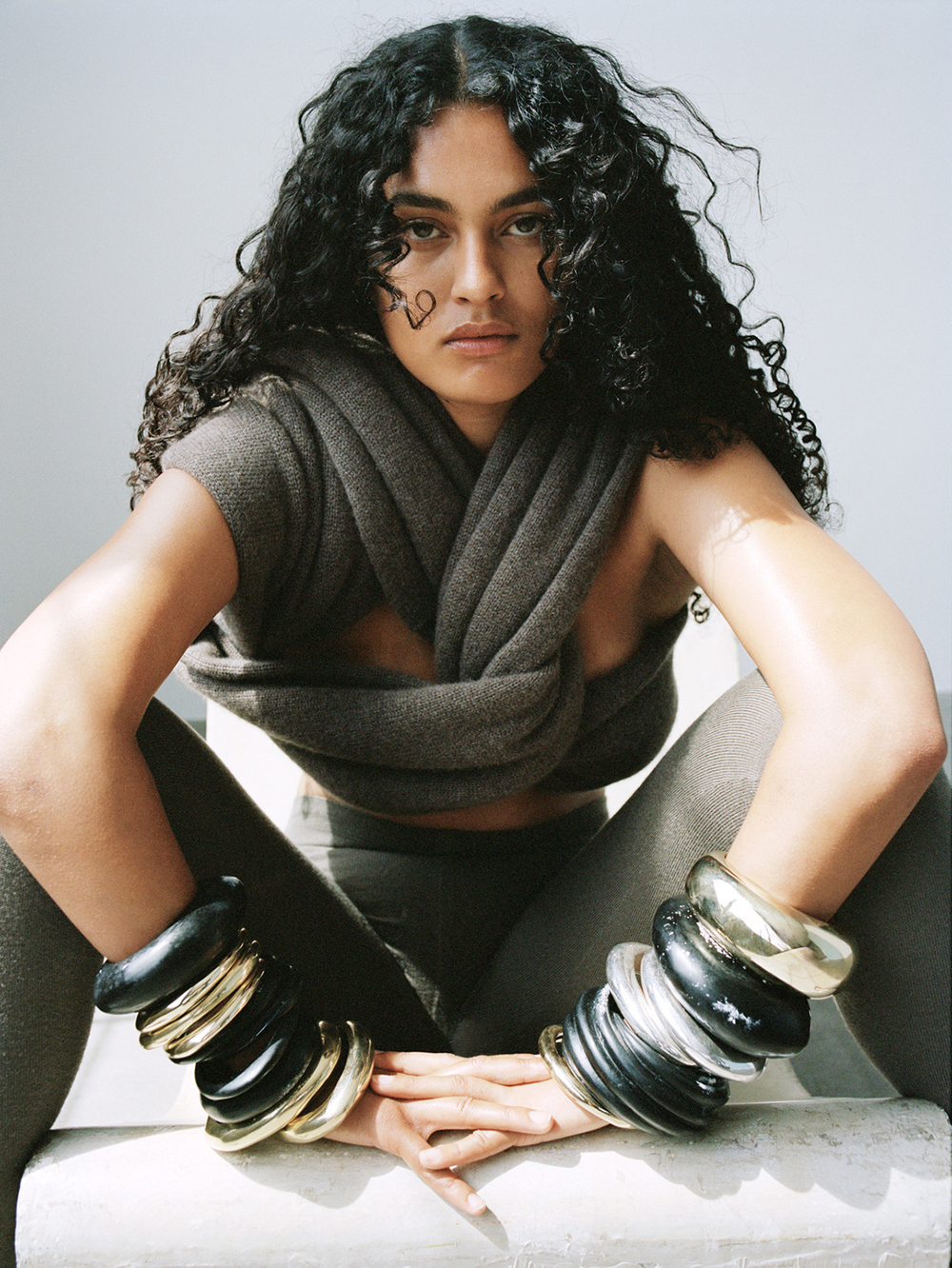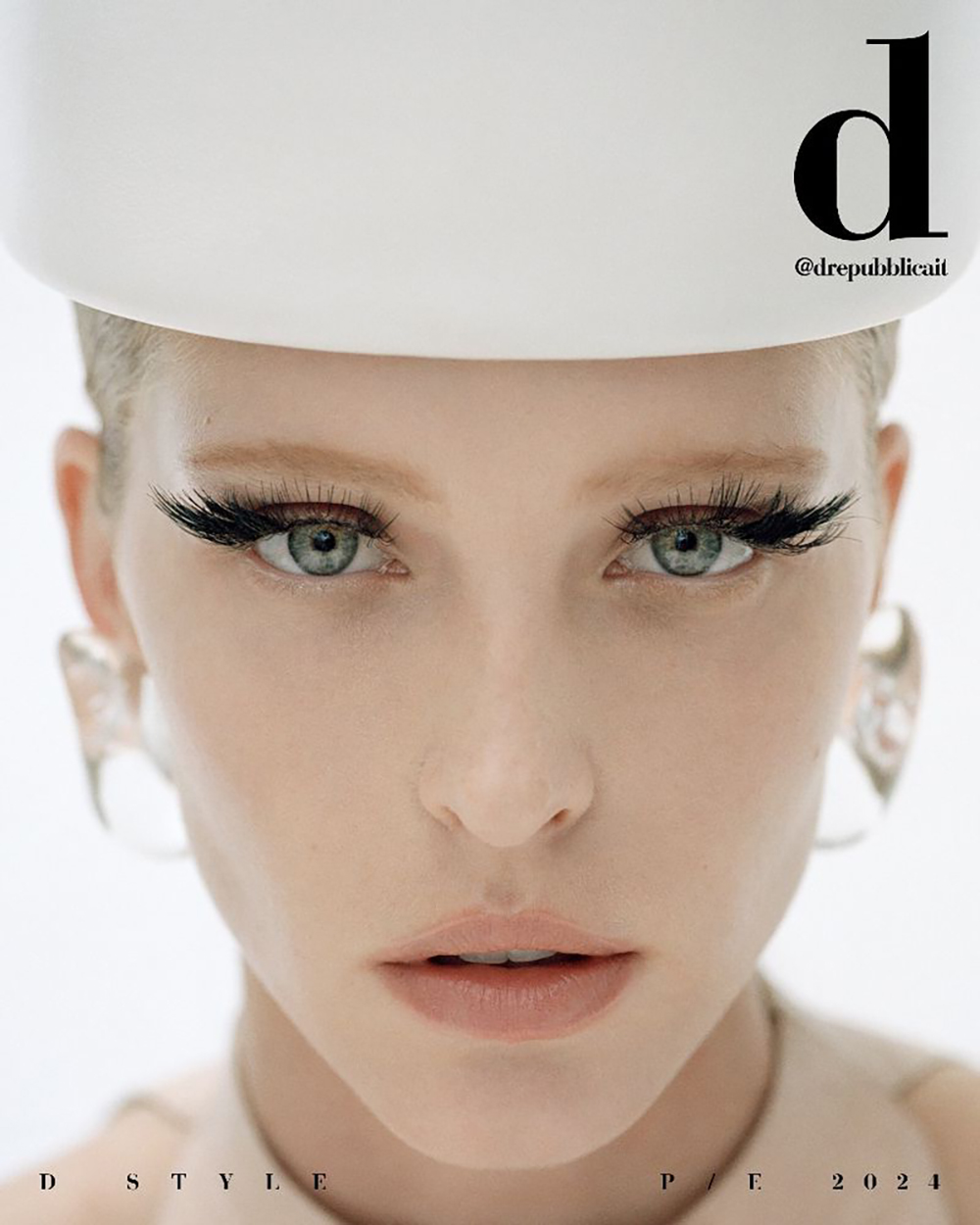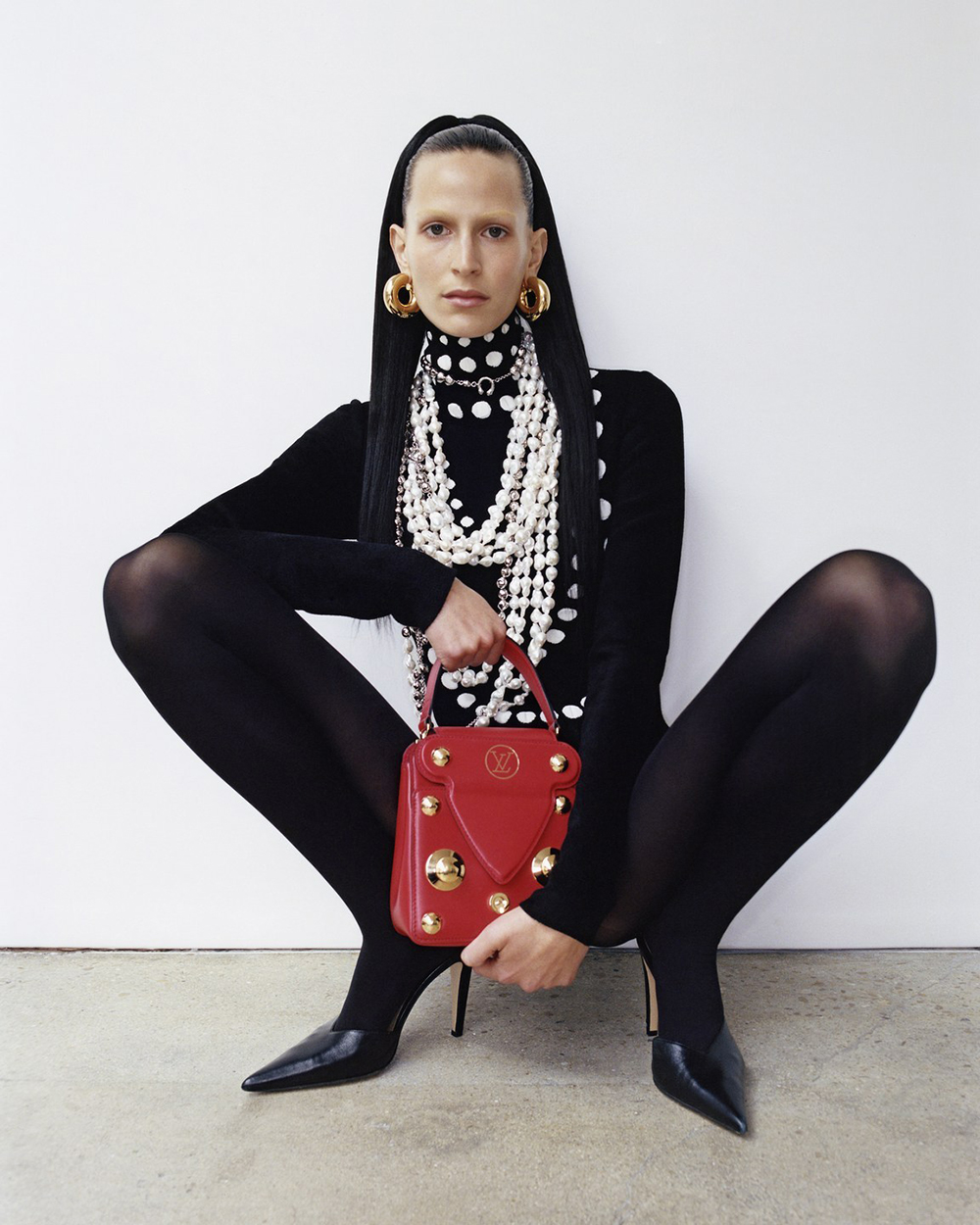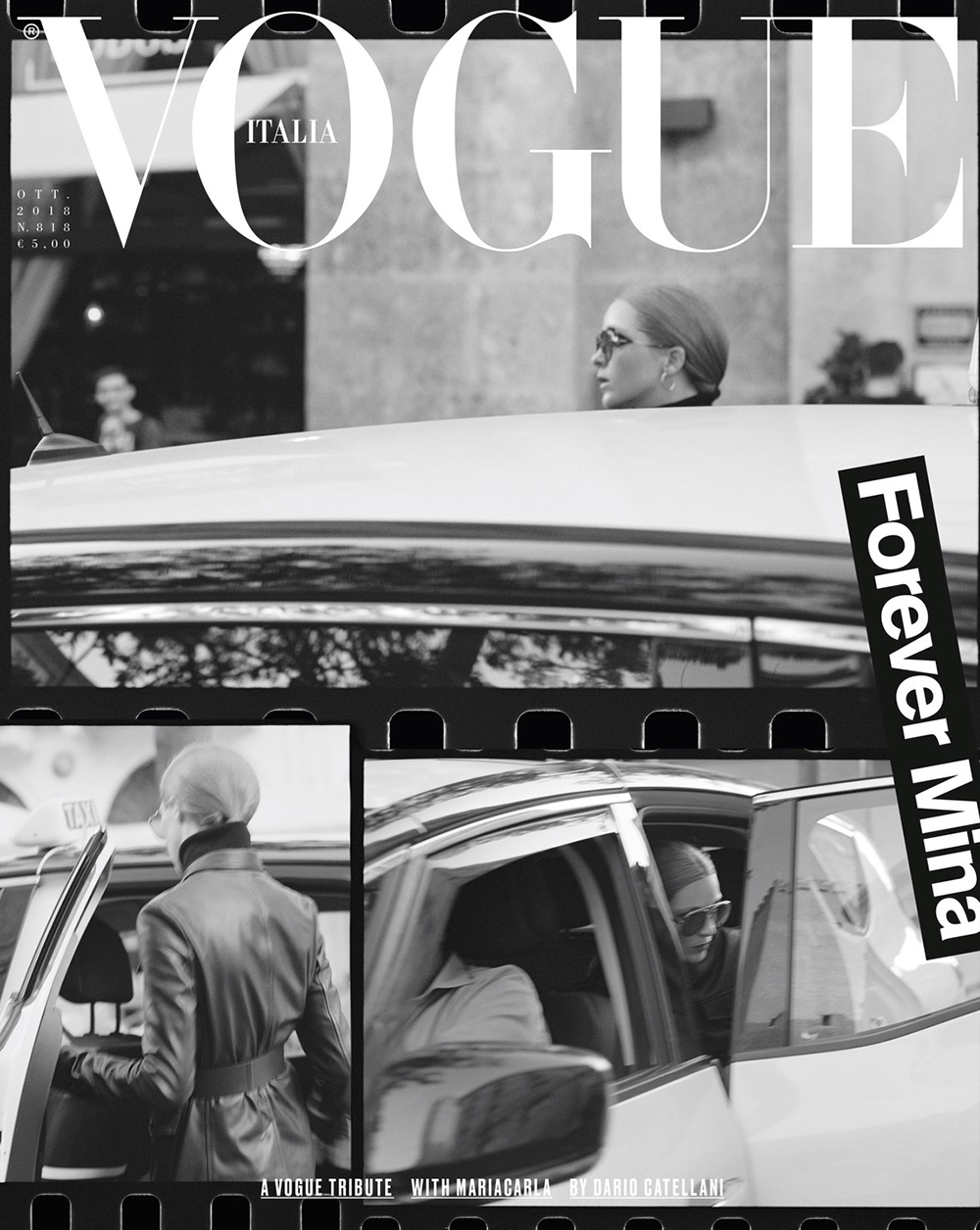For Vittoria Cerciello, fashion is more than just clothes—it’s a tool for self-expression, empowerment, and storytelling. Cerciello is a renowned stylist whose work spans the worlds of high fashion and editorial, blending influences from her childhood in Naples with the cultural energy of Milan, Paris, and New York. With a career shaped by her deep respect for individuality and commitment to challenging industry norms, Cerciello has styled for some of the biggest names in fashion, from Vogue Italia to Helmut Lang. Drawing inspiration from femme artists like Simone Leigh and Cindy Sherman, she approaches styling as both an art form and a powerful tool for empowerment. Models.com contributor Shelton Boyd Griffith caught up with the cosmopolitan stylist to dive into her creative journey, the inspirations behind her work, and her thoughts on the future of fashion in a rapidly changing world.
What inspired your fashion curiosity as a child?
I think it all started in the most ordinary of ways, by looking at my mum getting dressed. She was a big lover of Mugler. She wore her clothes and, when she wore them before going out, in my eyes, it was like seeing her turn into Wonder Woman. In that moment, I probably understood the transformative power of fashion, which I still find fascinating today. When I later grew up and felt inadequate in the social context I was surrounded by, that of the Neapolitan bourgeoisie, I found fashion to be a refuge; a place where all my peculiarities, the defects, weren’t mocked but celebrated in their uniqueness. That’s when I understood I’d found my place in the world.
Born in Naples and living and working between Milan, Paris, and NY, how do those cities influence your style choices and the things you’re drawn to aesthetically?
Milan was the city where I started my career, where I worked for the first time [at] a fashion magazine. Apart from this rite of passage, which was fundamental in my journey, I can’t say I felt any particular vibrations that still reverberate in my work today. On the other hand, New York, where I arrived when I was younger, was a cultural shock to me. It’s [New York] a city that represents freedom, where you can meet the most varied of humans, and you can express yourself to the maximum. It [New York] offers infinite possibilities to take up space. A formative experience of infinite power that I bring to my work. New York — so far from my hometown, Naples — is precisely the place where I fully understood the power of that vision I had run away from for so long. I grew up with a mother who covered her head with hairspray amongst her group of friends who had a decadent baroque style. At the same time, those women who went to the beach usually adorned themselves with jewelry. A [Paolo] Sorrentino-like universe that I learned to accept and make my own and that I still take with me in my work. What is left of these two very different influences, the modernity of New York and the baroque of Naples, is how my professional identity is measured.
“Women’s bodies today are still a battleground. What can I do…to move this conversation forward, to expose those contradictions, and to overcome them?”
What are some of your favorite fashion images or styling moments in fashion history?
Undoubtedly, the Vogue Paris ones from Carine Roitfeld’s time, the shoots with Juergen Teller, and many other masters of our time. Roitfeld’s work seemed revolutionary to me. These women were characters out of a story that came straight out of their minds who, page after page, turned into others, dressing themselves for the sake of their own pleasure and never for that of others. I’ve always found it extremely empowering.
How do you approach styling for the runway vs styling for a campaign or an image?
I start from the same raw material, but the methodology is different. When approaching editorials, it’s about creativity within purity to be adapted to the theme of the shoot or the specific magazine issue. When I’m working on styling a fashion show, I try to value the designer’s vision by putting my twist on it, but without imposing my vision.
Outside of fashion, what else is inspiring you right now?
I look at the work of female artists such as Louise Bourgeois, Sarah Lucas, Cindy Sherman, and Simone Leigh; female painters like Jenny Saville; female photographers such as Talia Chetrit, Vanessa Beecroft, Francesca Woodman, Tierney Gearon; writers like Ina May Gaskin, who have taught me the profound correlation between the female and the divine. These are all women I’ve appreciated for some time already but whose importance became even more relevant after the birth of my daughter. If you think about it, our industry is full of contradictions: fashion celebrates the female body, but only in the measure within which it respects some physical characteristics. Inclusivity lasted one season, and then it was abandoned; some luxury brands don’t even offer their clothes in bigger sizes. In editorials and advertisements, you often see women in their thirties and forties who are heavily photoshopped and flattened to look extremely young. Women’s bodies today are still a battleground. What can I do, in my own small way, to move this conversation forward, to expose those contradictions, and to overcome them? This is the question I ask myself every time I approach a project, and these artists always provide me with inspiration to rethink the terms of my work.
In your opinion, what is the role of a stylist today?
Despite the changes that have occurred in this role — due to the fact that the fashion system has turned into entertainment — I think its purpose is always the same. For brands, it comes with accompanying the creative director in the creation of a precise aesthetic, providing insights into the brand’s DNA. For editorials, where creativity is expressed in its purest form, it’s important to pursue your aesthetic values and apply them to the different stories you are working on.
Editorials for Vogue Italia, Harper’s Bazaar, M Le Monde, D la Repubblica, styling for Sunnei, Helmut Lang, etc – what are some of the most memorable projects that stand out to you?
Back in 2018, Giovanni Bianco, the then creative director of Vogue Italia, rang Dario Catellani and me for the creation of the magazine cover dedicated to Mina. We shot Mariacarla Boscono, who, like the music diva herself, was hiding in and around the streets of Cremona. Back then, Vogue Italia’s cover had never been shot by Italian photographers – for how much that may seem paradoxical – for us, it was definitely memorable.
Can you discuss your creative process working with photographers?
To begin with, I always try to collaborate with people with a different aesthetic from my own because I’m more intrigued by oxymorons and what comes out of contrasting visions. Generally speaking, I love working with female photographers like Joséphine Løchen, Sharna Osborne, Kristin-Lee Moolman, Pegah Farahmand, and Zoe Natale Mannella, to name a few.
What advice do you have for aspiring stylists?
Do not rush, even though it seems much easier and faster to build one’s career today. This work, which is based on image, has a lot to do with your inner self [and] the world of references that we build ourselves as humans. To create a precise aesthetic identity that makes your contribution unique and different from others, you must understand who you are as a person, not only as a professional. And to understand that, you need time.
Speaking of the next-gen, what emerging photographers, designers, stylists, or creatives are generally catching your eye?
When it comes to designers, I love the work of Niccolò Pasqualetti, Marie Adam-Leenaerdt, and Lessico Familiare; as photographers, Nicola and Manuel, Zoe Mannella, Juliette Abitbol and Angèle Châtenet.
What else would you like to explore in the fashion editorial space? What’s next?
I’ve been working for a year on a personal project that has taken more time than I expected. The approach and pace are very different from the usual commissioned projects, but they’re extremely exciting.












